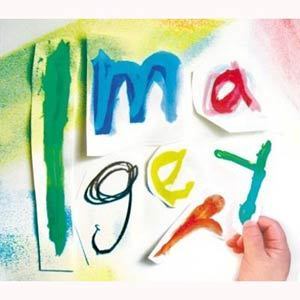
so much depends
upon
a red wheel
barrow
glazed with rain
water
beside the white
chickens
This simple poem can reveal many truths depending how you look at it, but for our purposes, let's look at it for its power to paint imagery--visual in this case using clear, concise descriptions, emjambment, stanzas, and an active verb-"glazed."
Imagery is the most important element of writing that allows readers to experience the world the words invoke , so let's take a quick tour of the tools of imagery
1. Be unique
Don't just pull on the fluffy clouds above, imagine how they might be tufts of cotton pulled from Santa's coat as the flew through the air on Christmas Eve
or
Drops of rain that have crowded together to watch the children play in the dew.
2. Be specific
It wasn't just a loud noise, The thunder sounded like the angels made a timpani drum out our neighbor's pool.
or
The music wafted into the room like the flutter of a mouth's wings
3. Be partial
Don't try to turn everything into an image or readers will have sensory overload and find it difficult to determine what is important and what isn't.
We don't need to know that
Trevor's backpack hung from his back like a bulging red water balloon, and his feed squeaked across the floor like warped wiper blades, and his hair stuck up like the tail feathers of chicken when we're really just following him into school.
4. Do Double Duty
If the image only shows us one thing--what something looks like--then it's not doing enough work. Every image should develop multiple elements of writing --character development, plot development, and so on.
In
The Year of the Sawdust Man, the main character described her mothers room saying, "I knew every ring of dust, every pierced earring, and every piece of handmade clothing" in that "airy room overlooking Minkie's Mercantile" and in these few short words, we can guess that we're in the past or there wouldn't be a Mercantile,
Mama probably paid more attention to her appearance (earrings and clothes) than her housekeeping (dust), and the room has several windows (airy). And most importantly, we know that the narrator pays a lot of attention to detail.
So know setting (physical/temporal) and character development for two characters from must a few images.
5. Be sensory
We all know that images appeal to the senses and to do that you can use figurative comparisons, active verbs, and concrete terms, but it's also important to remember to include all of the senses--sight is the most commonly invoke sense, but don't forget sound, smell, taste, and touch.
To hone your imagery skills, explore the imagery of poets and authors your admire, take time to touch, taste, smell, see, and hear a wide variety of things. Try you hand at describing everyday, extraordinary, and surprising things in your head, in a notepad, on a paper towel. Bring your world to new life in words.
Go ahead, give it a try, share some imagery in a comment to this blog. Or share a link to a poem or a song that rocks the imagery!
 newest »
newest »
 newest »
newest »
 newest »
newest »
And now a gusty shower wraps
The grimy scraps
Of withered leaves about your feet
And newspapers from vacant lots;